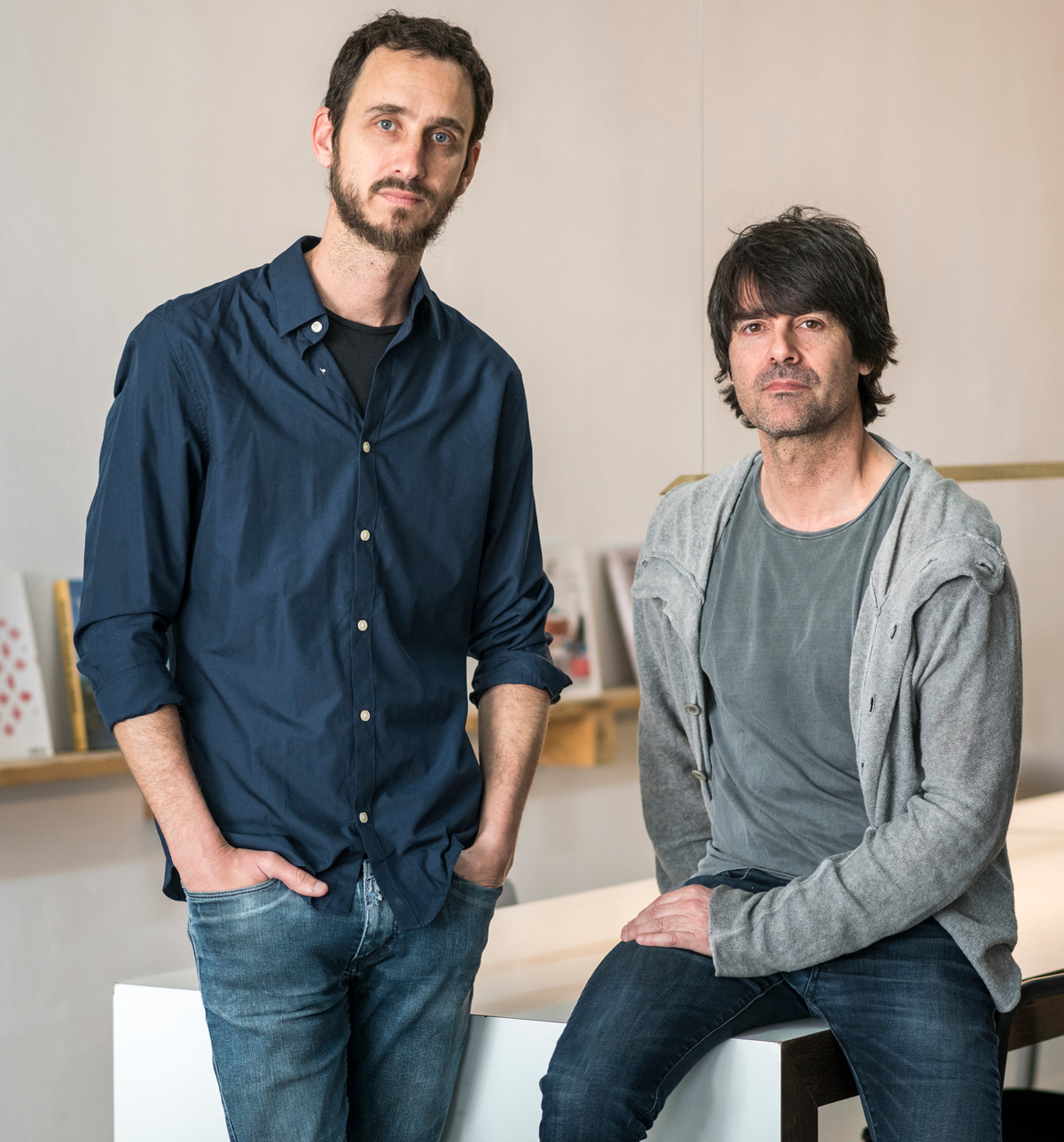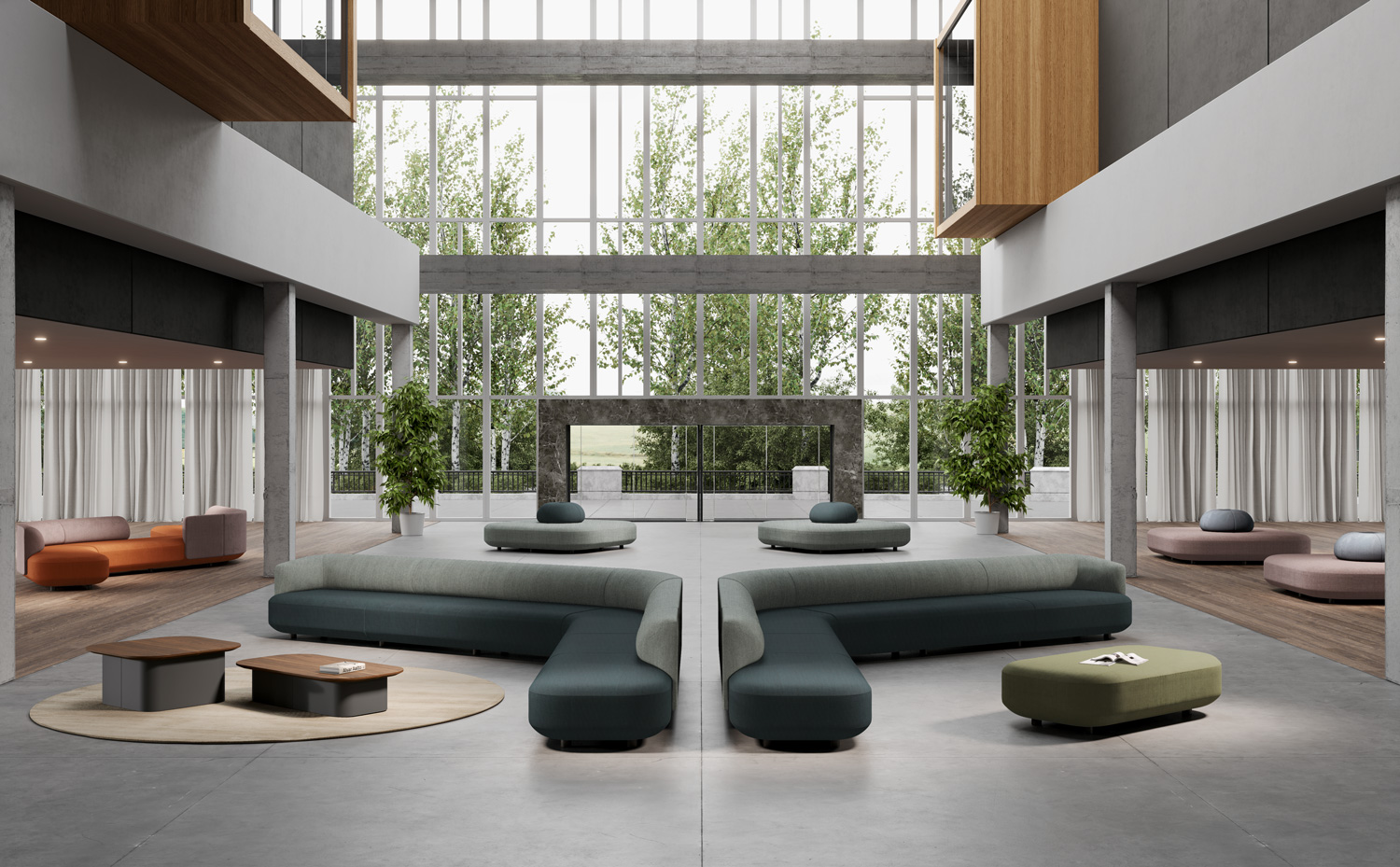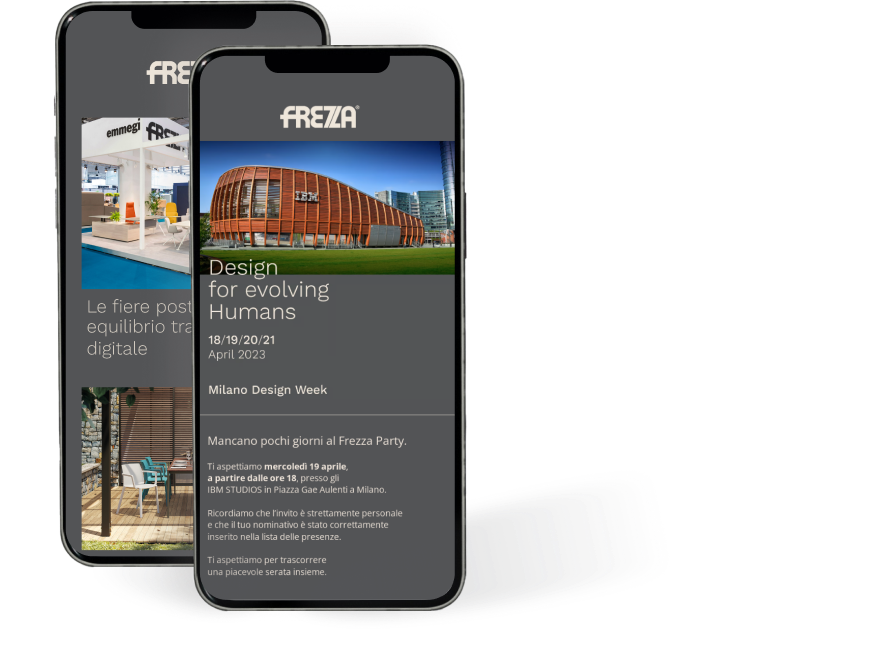This week we’re meeting with industrial designers David Ramos Tarrés and Jordi Bassols Borrell, creators of our brand new Afina collection, released in 2021, and owners of Ramos Bassols, based in Barcelona.
The studio, based in Barcelona, was founded in 2004 after several years of experience in different fields (urban furniture, tableware, lighting and office furniture) for both designers. Now it offers a personal view on contemporary design, recognisable for its clean lines, balancing form, funtion and aesthetics.

1. How was the idea for the Afina sofa conceived? What were the inspirations for the same?
Afina was born as a compositional game of elements and colours. A tool to generate spaces.
Our idea was to start from a linear base element in suspension that was forceful in its form, but gentle in its perception and could work on its own. To which we could add a continuous adaptable backrest in the form of a wide band, which we refined at the ends to make it disappear. Two related but not merged elements that allow us an interesting play of shapes and colours.
2. Usability and Comfort of an Afina sofa: Please talk us through the experience provided to the end user.
Its compositional elements allow us to draw very diverse and personalised spaces, from distributing the most basic elements in open space or positioning them in smaller areas, to generating large format compositions in an open or more closed way.
The possibility of using the basic elements and complementing it with backing on one side or the other allows the composition to grow in a totally free way and to branch out according to the needs.
Afina provides a very interesting chromatic play between the back and the seat, making a distinction between the two areas or unifying the whole by using the same colour.
3. In your opinion, what turns a good workplace into a great one?
In our opinion it is important to give the space a certain warmth, to generate attractive atmospheres, spaces in which one feels comfortable to work or just to be in them. Attractive and versatile places, spaces that do not condition you excessively, that you can modify according to your needs in a fast and comfortable way.
4. Among all these beautiful and creative works you have done before, could you share with us your design philosophy? How would you interpret it?
It is difficult to define your own style. We like to think that we make clean, honest products that are attractive to the public and always try to make small contributions that justify them. We design those products that we would like to have in our home or in our work space.
5. Is the desire to create a great workplace for employees being considered earlier in the project lifecycle of the product? What is changed compared 10 years ago?
The working environment has changed considerably in recent years. Technological advances now allow us to carry practically everything we need to work in our hands, which allows us to create more versatile spaces where users can work according to their needs at any given time in more secluded or collective spaces. Perhaps the versatility of the different spaces is the most noticeable change in today’s offices. Consequently, furniture must accompany this same concept of versatility.
6. Name one thing that could disappear from the workplace in the next future.
The meeting rooms as such.

